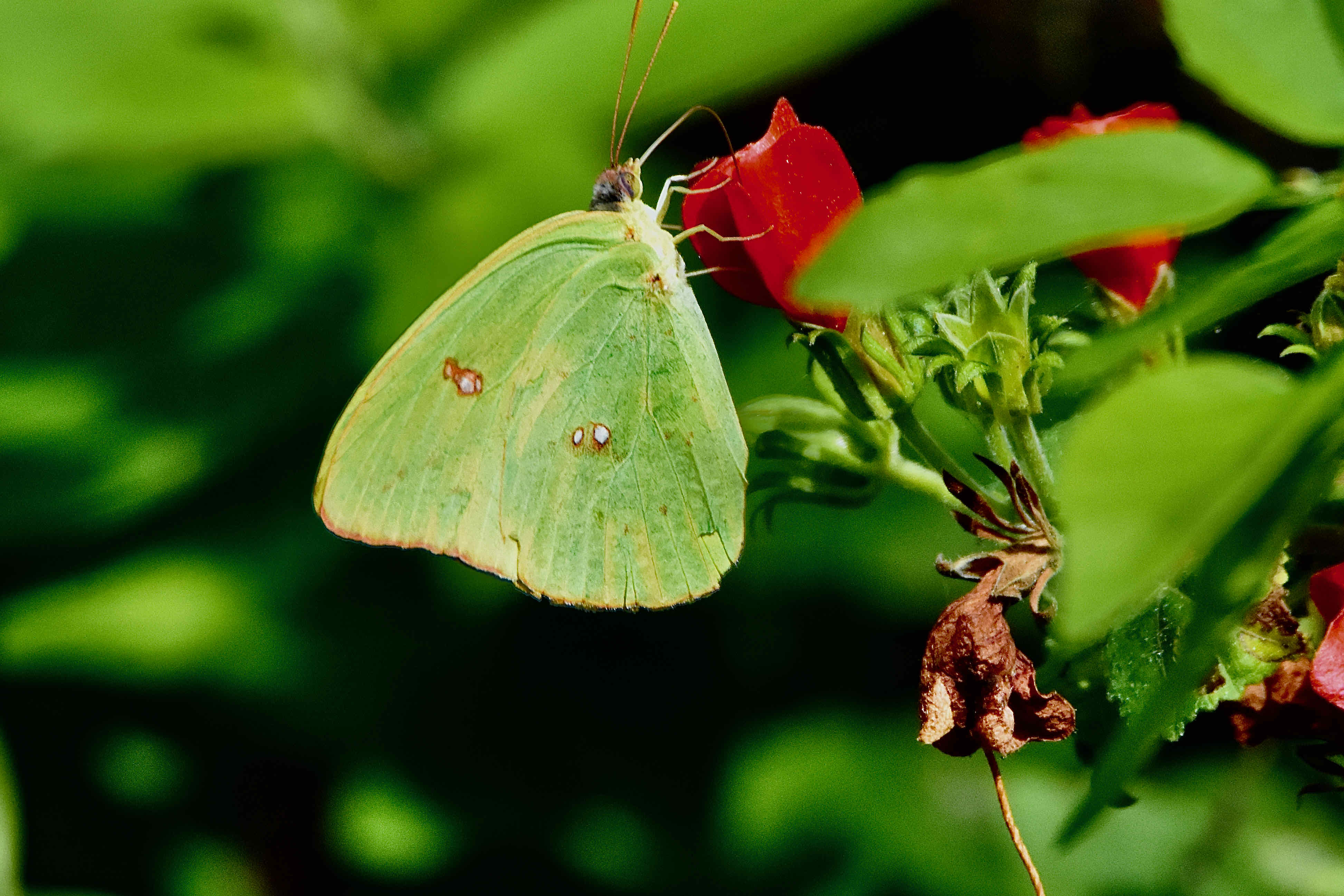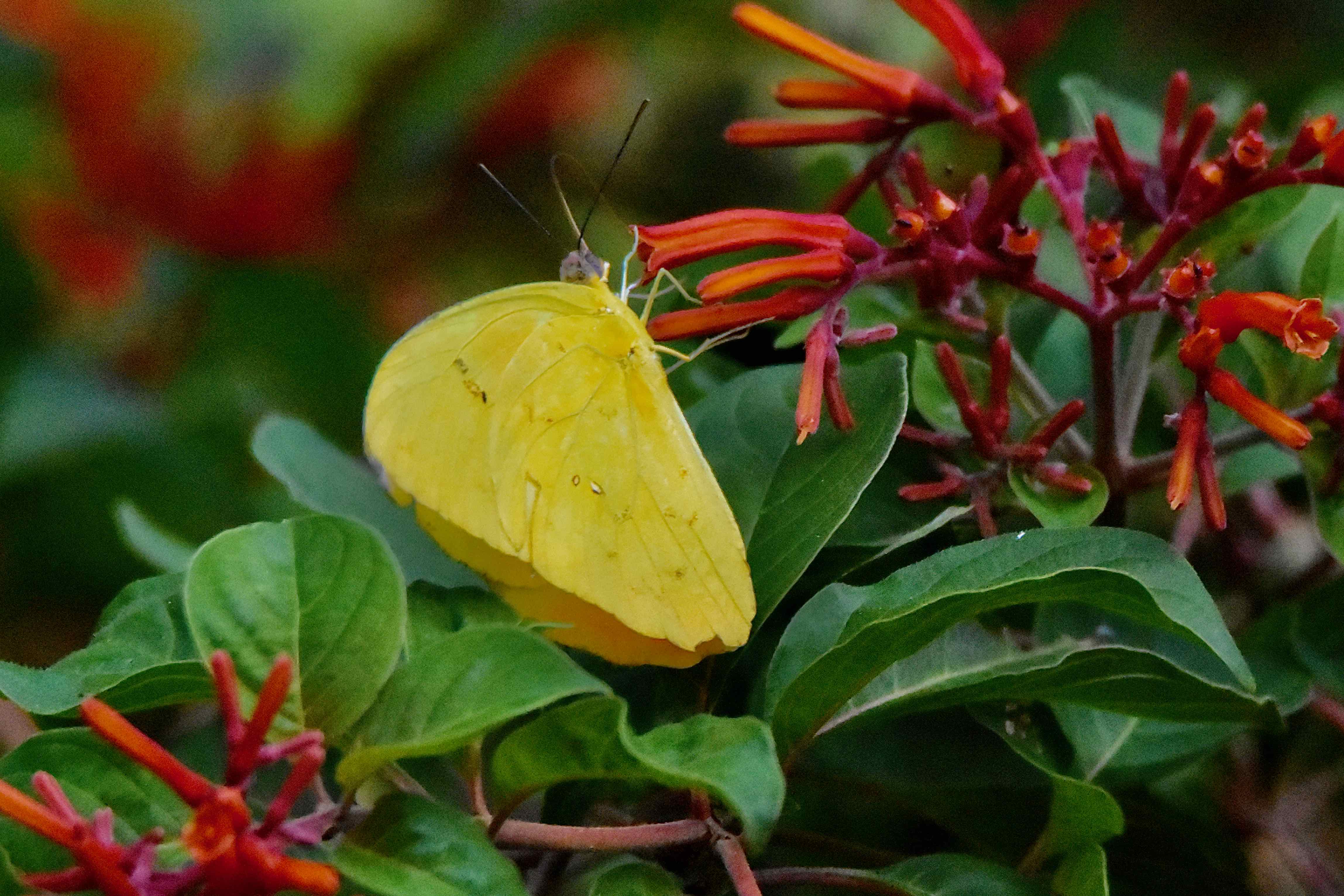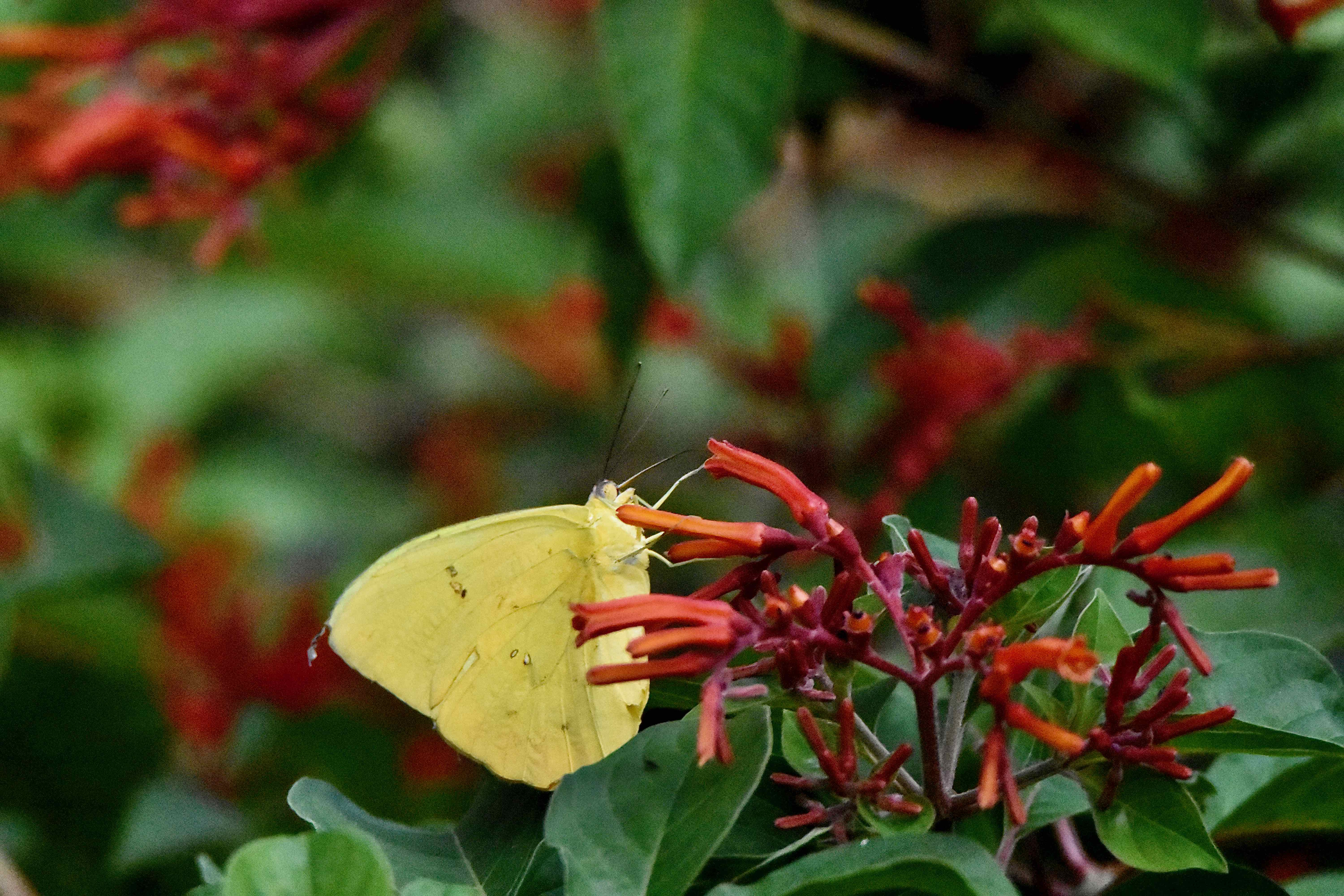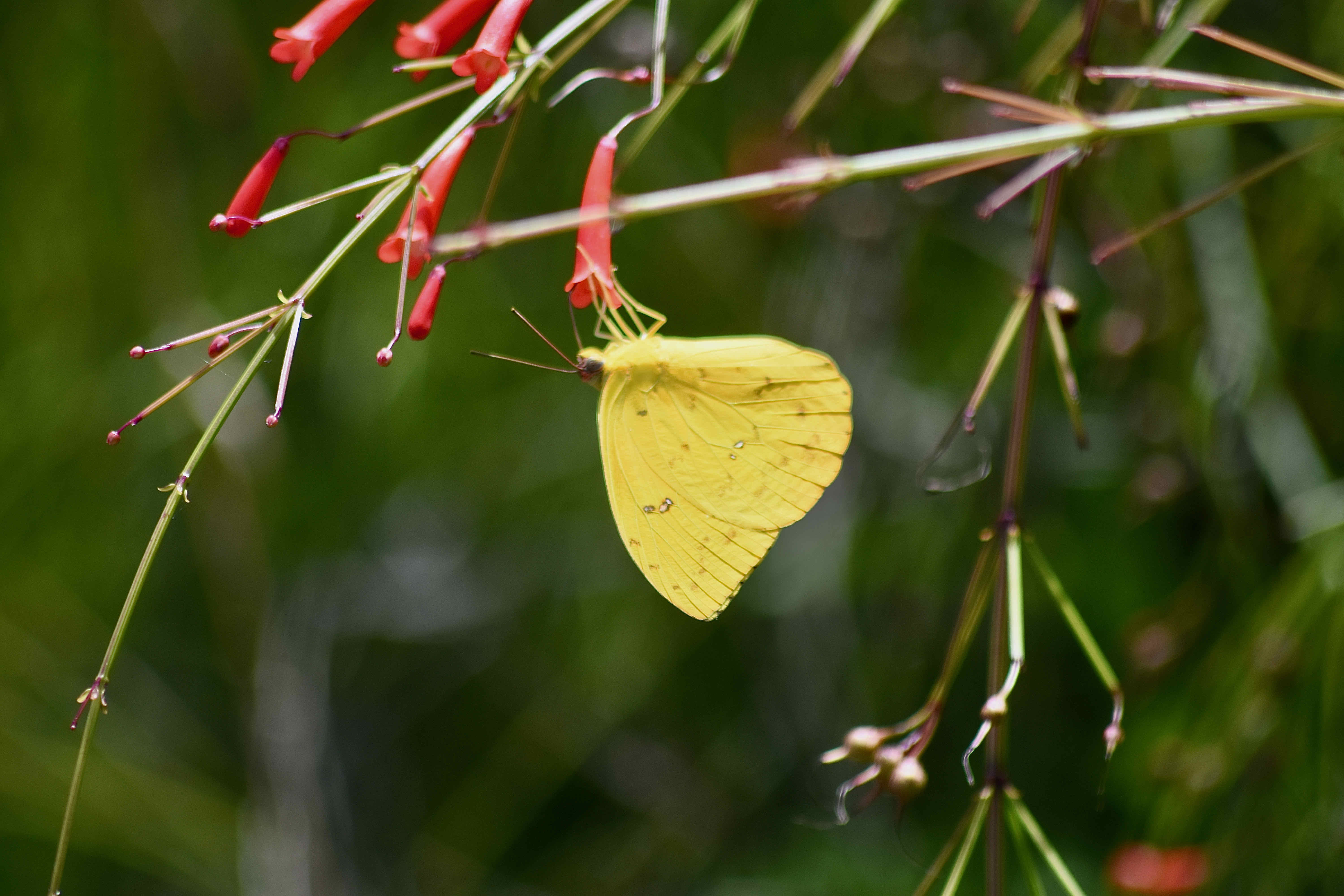
Cloudless sulphur butterfly, photographed at Aransas National Wildlife Refuge, Aransas, Texas, in October 2019.
You might not know the name of this butterfly but almost certainly you've seen it flittering around in your neighborhood, in a park, along roadsides and maybe in your yard.
This is the cloudless sulphur, Phoebis sennae, one of the most common butterflies in Florida, found in all 67 counties. It's relatively large size, yellow color and adaptability to most environments makes it easy to spot even by the most casual observer.
The cloudless sulphur is basically a butterfly of warm climes. Its range extends from Argentina, through South America, Central America, Mexico and the Caribbean into the deep south of the United States. It will wander farther north in spring and summer, even into Canada on occasion, but the numbers begin to thin around Pennsylvania and New York. Sulphurs can't tolerate freezes, so they'll migrate in large numbers as far south as Lake Okeechobee. Sulphurs in south Texas and South Florida stay put and are active all year.
Cloudless sulphurs are yellow, with irregular spotting throughout their wings. If you catch a glimpse of one with its wings unfolded, you'll a series of dark spots along the outter edges. Their wingspan can exceed three inches. Females can be paler than the guys, or even white. In winter, males take on a darker shade of yellow and are larger than those born during the warmer months.
Host plants include members of the pea family, mainly in the genus Chamaecrista and Senna, including the ubiquitous partridge pea, C. fasciculata, and the strangely named septicweed, S. occidentalis.
Females lay their eggs singly on the leaves, buds or flowers of the hosts; the larvae then munch on said leaves, buds and flowers of the hosts. So much so that they can damage ornamentals. But it's not necessarily a free lunch. Some of these plants actually fight back with the help of some allies. Members of Chamaecrista and some members of Senna have glands on their leaf stems called nectaries that attract ants, some of which are known to attack leaf-eating critters, including cloudless sulphur caterpillars and eggs. It's a tough, tough world.
Adult cloudless sulphurs feed, or nectar, on a number of plants, particularly those with long, narrow tubes, such as morning glories and firebush, as shown on this page. They have a longer tongue than most butterflies, enabling them to feed on flowers with deep tubes. They also prefer red, but they also feed on plants that don't fit that pattern, like lantana. Males are known to sip from mud puddles.
These butterflies can be found in any habitat when migrating, but when breeding they prefer open, disturbed areas where they can find both host and nectar plants. Males of the species spend their time patrolling these areas for receptive females. Cloudless sulphurs roost at night and during storms, finding just the right spot on a yellow leaf, or one with a reddish hue, where they can blend in and hide from predators.
The scientific name of the cloudless sulphur comes from Phoebe, the sister of Apollo, and the senna genus of plants. It is a member of Pieridae, the family of sulphurs and white butterflies.



